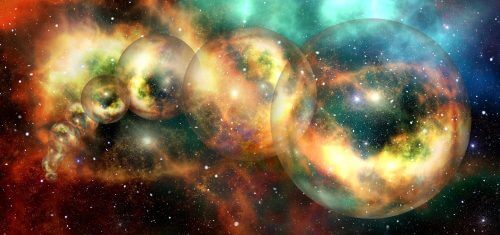Multiple dimensions sounds like science fiction, but innovative physical theories require us to look at the obvious and rethink the number of dimensions in the universe. Is it possible to build an experiment that will test this?

You've probably heard of gravitational waves before. These are waves that propagate through spacetime and are created as a result (for example) of collisions of black holes or neutron stars. LIGO's famous discovery was not only for the discovery and confirmation of Einstein's theory of gravity. Thanks to gravitational waves, scientists can finally test theories that until now we never dreamed we would be able to confirm or disprove.
One of the theories that researchers have been dreaming of testing for years concerns the number of dimensions in our universe. The key to examining this hypothesis was found in Ai Shem in the gravitational wave analysis from August a year ago. Two neutron stars orbited each other and merged. At the moment of the merger, enormous energy was released, some of which was dispersed as gravitational waves and some as radiation. Unlike merging black holes, merging neutron stars creates tremendous radiation that can be detected with advanced telescopes. Thanks to that flash of light, scientists located the distance of the neutron stars from the Earth and with the help of this information they drew some far-reaching conclusions.
What does a multidimensional world look like?
We are used to a three-dimensional world with an additional dimension of time, but additional dimensions may provide an explanation for the power differences between gravity and other forces in nature and perhaps also for the nature of dark energy. To understand exactly how dimensions and gravitational waves fit together, let's start by imagining a point of light spreading through space. Let's assume that at any moment, the light is scattered in all directions equally. Therefore, if we turn on and off the point light, a spherical shell of light will spread in space and grow. From the principle of conservation of energy, the energy on the whole shell is conserved. Because the shell grows over time, the amount of energy per cross-sectional area will decrease. That is, if we place two telescopes at some distance from each other, the telescope farther from the focus of light will notice a weaker light intensity. How much weaker? Weak in proportion to the area of the light shell.
The question is what is the size of this area? For each dimension, the shell area is different. In two dimensions the area of the shell goes as the radius, in three dimensions as the radius squared and so on (as a general rule, the intensity is inversely proportional to the distance to the power of the dimension minus one). Because we measure a decrease in light intensity that is inversely proportional to the square of the distance, we can say that the light moves in three-dimensional space.
But what about gravity? Well, gravitation is also described in the same way. Einstein's equation fits very well to a three-dimensional universe. Despite the beauty of the gravity equations, physicists are not satisfied with the overall picture. The force is incredibly weak and has no satisfactory description at high energies. As a solution, theories were put forth that add additional spatial dimensions so that the force of gravity spreads in them as well, while the other forces only spread in three dimensions. This fact allows the gravitational force to be weaker and at sufficiently high energies to see the effect of the extra dimensions on the strength of the gravitational waves.
In string theory, for example, additional dimensions are commonplace. So where are they? One hypothesis says that the dimensions are so small and folded that we are unable to access them experimentally. Another hypothesis believes that additional spaces are spread out in the membranes near the three "normal" physical spaces. Such membranes are precisely relevant to the mystery of the force of gravity. We can also briefly note that additional dimensions can provide an interesting explanation for dark energy as well. In some theories the expansion of the universe moves towards the extra dimensions and from our point of view the universe seems to be accelerating when in truth it is not.
So what was received in the end? Do we live in a multidimensional universe? Does the strength of gravitational waves decrease faster than the square of the distance? Well, the data from Leo and Virgo shows that we live in a three-dimensional world. Maybe it sounds a bit disappointing, after all discovering additional dimensions sounds more fascinating, but the very possibility of testing such theories is definitely incredibly necessary. It is important to note that string theory has not yet been ruled out because compact dimensions are still possible.
The article is based on a study published last July by a group of American researchers. To the article.

3 תגובות
The scientific article gives 3 directions in which you can think about applying it to decide an open controversy in physics.
One of them is String Theory versus Anthony Garrett Lizzie's Theory of Everything. It is possible to think about an experiment at Cern.
The universe accessible to us is necessarily three-dimensional, but it is not certain that the universe accessible to us is all there is.
String theory is still just mathematics. It's quite clear that it will remain so and you won't be able to describe physics without a huge breakthrough, and then it probably won't be called by the same name anyway.
The state of understanding of physics today is that there are only three spatial dimensions. It is possible to build endless theories that will contain more dimensions (in addition to string theory), but if you fail to link a theory to a physical measurement, it remains only a mathematical theory.